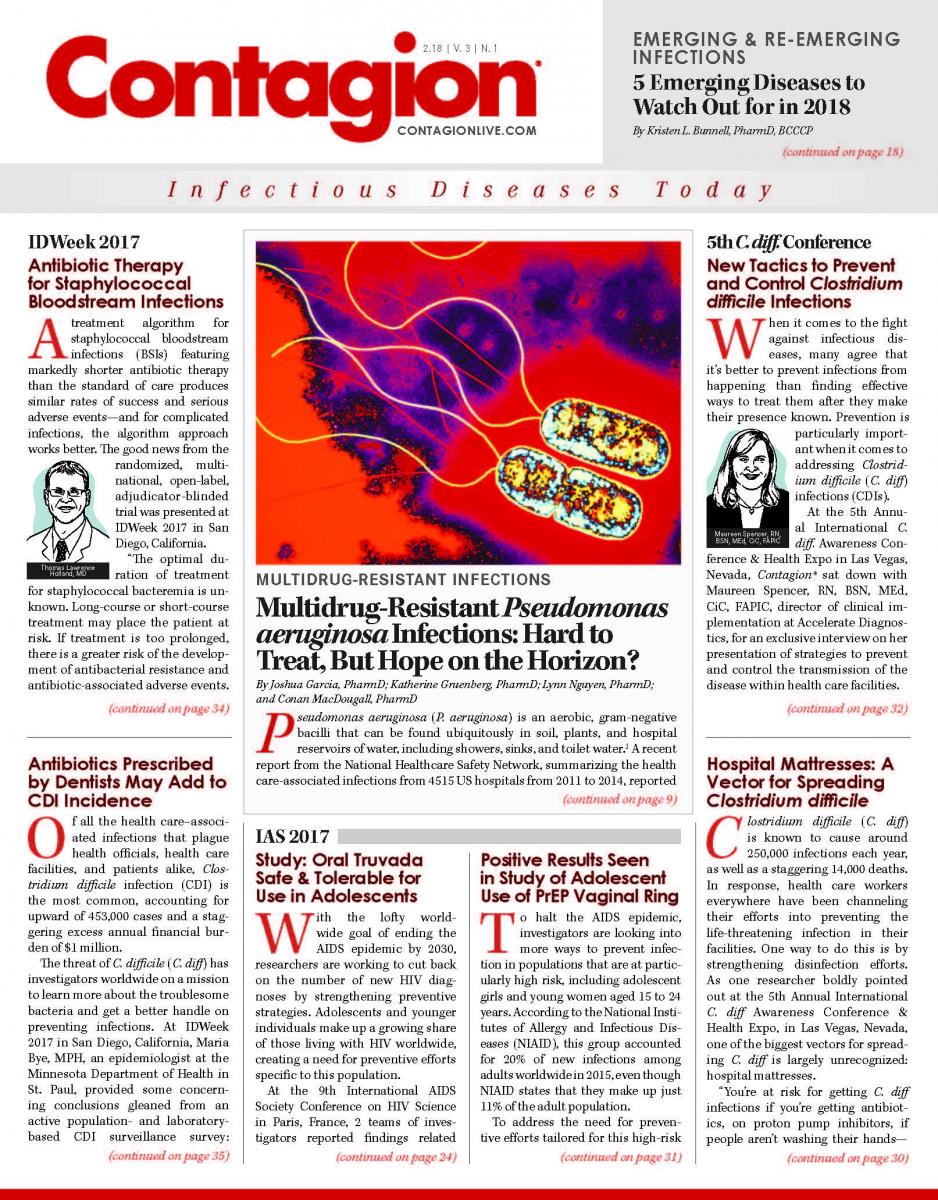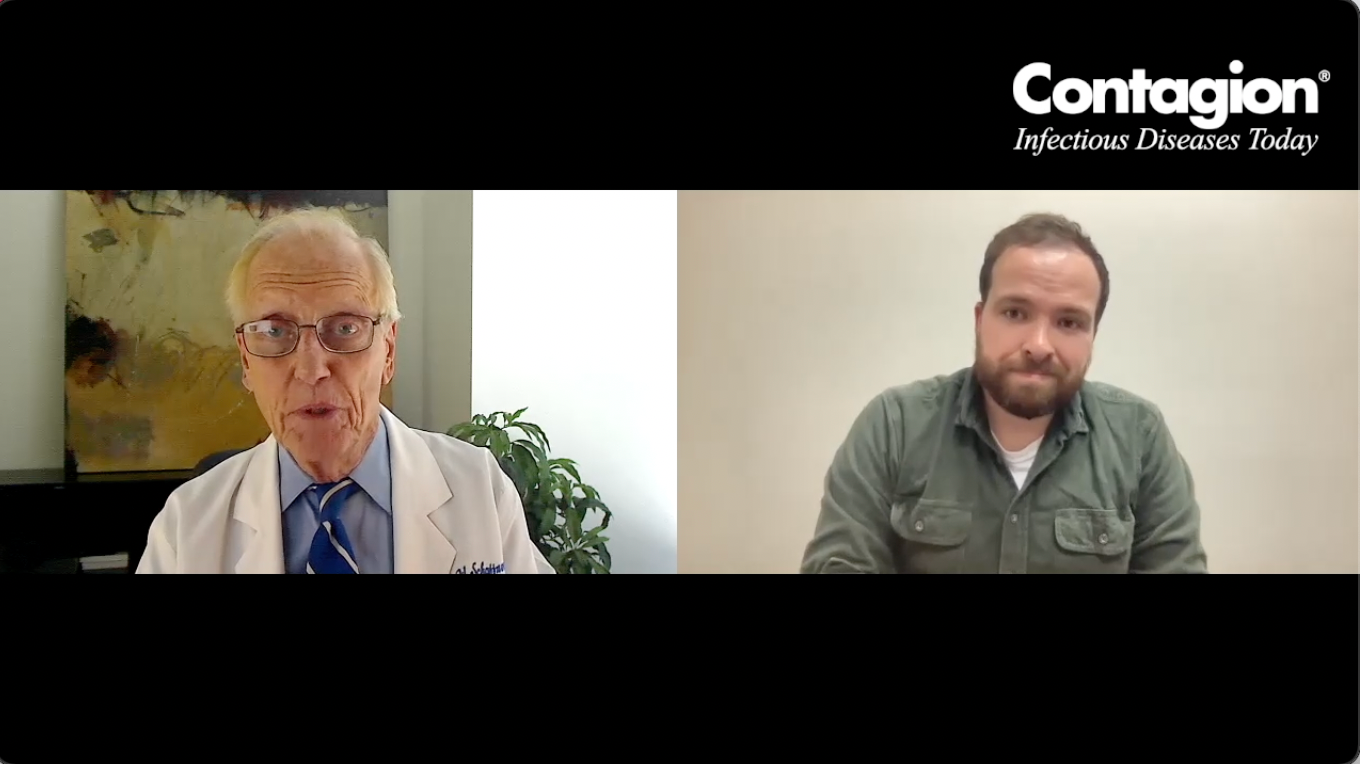Amid High-Profile Outbreaks, Benefit of Widespread Asymptomatic Screening Remains Low
Should patients be screened for emerging infectious diseases based on travel history? Recent studies cast doubt.
When a West African Ebola outbreak overtook inter­national headlines in 2014, the constant media attention was about more than the symptoms and consequences of the deadly virus. It was also about fear that the virus would spread far and wide.
Eleven people were treated for Ebola in the United States,1 most of whom contracted the disease in West Africa, and all but 2 recovered. Although the outbreak’s impact on Americans was infinitesimal compared with its impact in Sierra Leone and Liberia, the US cases caused outsized panic due to 1 factor: Ebola’s famously long incubation period of up to 3 weeks. Americans knew the numbers were small, but what if those official numbers were hiding something much, much bigger?
CERTAINTY INSTEAD OF PANIC
On one hand, the 2014 Ebola episode is a cautionary tale about the dangers of public panics. On the other hand, it is an example of something epidemiologists cannot avoid: new emerging diseases are appearing—and evolving—in humans, and they are not all easy to detect or contain.
Recently, some researchers have begun asking the ques­tion of whether patients ought to be preemptively screened for diseases and other health problems after traveling over­seas. John H. Connor, PhD, associate professor of micro­biology at Boston University’s School of Medicine and its National Emerging Infectious Disease Laboratories (NEIDL), said there are important reasons to get to the bottom of potential Ebola infections as soon as possible, particularly in the cases of health care workers who have traveled to Ebola outbreak zones and the family members or others with whom they have come into contact upon return.
“For both of these groups, having a test that can look for early signs of infection would be clinically useful because it would allow for more effective quarantine during the early stages of the disease and provide a level of fear reduction to those at risk,” he said.
Dr. Connor is currently working on a test that can do just that. Last month, he and colleagues published findings in Science Translational Medicine showing that their rapid diagnostic test can detect antigens for Ebola, Lassa fever virus, and malaria in less than a half hour.2
“We undertook a study recently with colleagues at [the United States Army Medical Research Institute of Infectious Diseases] where we looked at the circulating immune response in nonhuman primates infected with Ebola virus,” he said.
The question was whether something could be identified in the primates’ immune responses that could positively identify a virus at work and differentiate it from other febrile diseases.
“Our work showed there are host responses, not viral RNA, that show up in the blood,” Dr. Connor said. “Importantly, these markers showed up prior to fever in many cases. We think that a test tracking these host responses would make
early infection detection a possibility.”
WHOM TO TEST, AND WHEN?
Jesse Waggoner, MD, an assistant professor of medicine at the Emory University School of Medicine and Rollins School of Public Health, said a proactive approach (including pretravel health care) is the key to safe travel.
“Patients should have a low threshold to present to their medical practitioner or contact their travel medicine provider for any new illness that develops during travel or in the few months following their return,” said Dr. Waggoner, who also treats patients at Emory’s TravelWell clinic for pre- and postinternational travel health care. Patients who travel to countries with malaria, for instance, should seek medical attention even if fever is their only symptom and even if they took malaria prophylaxis prior to departure, he said.
Dr. Waggoner said gastrointestinal illnesses or respiratory infections are also common reasons for posttravel doctors’ visits. And while he said patients should tell their physician where they traveled, patients shouldn’t base their decision to see the doctor on where they traveled.
“The list of infections that we consider as providers will change based on where a patient has been, but individuals should not delay or forgo medical care because of travel to what is perceived to be a low-risk destination,” he said.
What about when there are no symptoms? Dr. Waggoner said that’s a question being studied, but at present, asymptomatic screening decisions need to be answered on a case-by-case basis.
“For common, short-term travel itineraries (days to a few weeks), screening is very low yield and is generally not recommended,” he said. “If individuals have prolonged exposure to freshwater or unsanitary conditions, screening for certain parasitic infections may be warranted.”
Waggoner added that patients who have sex with new partners while traveling might consider proactive testing for sexually transmitted infections. A number of studies have been performed in recent years looking into the efficacy of asymptomatic screening. They have shown little in the way of concrete benefit. For instance, a 2011 study that examined whether blood eosinophilia could indicate that a traveler had contracted schistosomiasis, strongyloidiasis, filariasis, and toxocariasis, showed the test, “appeared to be of no value in routine screening of asymptomatic travelers.”3
Another study, published in 2014, looked at the feasibility of using interferon gamma release assays (IGRAs) to screen patients for tuberculosis (TB) after long-term travel to countries where TB is endemic. They found that the screening could be used, but only 8 weeks after their return. And even then, widespread screening wasn’t necessarily worthwhile.4
“One might even argue that IGRA testing should be limited to only those travellers who are going to work in a medical setting,” wrote Floor Elfrink, MD, of the Dutch Public Health Service, and colleagues. In 2014, Dutch researchers also looked at whether routine screening of patients who undertook long-term travel (median time: 12 weeks) to the subtropics was a worthwhile way to detect parasitic infections. Although the study of 556 patients identified several infected patients, they found that routine screening for most of the parasitic illnesses was not warranted. When it came to schistosomiasis, detection rates were somewhat higher; they were also closely correlated with swimming in particular freshwater lakes in countries where the parasitic illness was endemic. Author
Darius Soonawalla, MD, PhD, concluded that such screening be limited to patients with a history of exposure to freshwater in highly endemic countries.5
The US Centers for Disease Control and Prevention (CDC) generally has no official position on whether to screen asymptomatic travelers for most diseases. Writing in the CDC’s most recent Yellow Book for international travel, Michael Libman, MD, of McGill University’s School of Medicine, Montréal, said there is little research on the cost-effectiveness of such screening, and he noted that it can be difficult to pin down risk based on patient self-reports.6
“[E]xposure history is often unreliable and poorly predictive of infection, the value of a detailed itinerary is limited by incomplete information on where pathogens are endemic, and the type of travel often does not provide a practical assessment of risk,” he wrote.
Dr. Waggoner added that most general practitioners aren’t equipped with the tools or knowledge to screen for emerging diseases. Even though the workup for common symptoms can be done in a general outpatient setting, he said, “it is unrealistic and unfair to expect our general practitioners to remain current on outbreaks in foreign countries and know the appropriate testing for all potential travel-related infections.”
Waggoner said it’s better for patients to see a specialist, if possible, for posttravel illnesses.
PROGRESS FOR SPECIFIC, HIGH-PROFILE VIRUSES
Back at NEIDL, Dr. Connor said the technology he and his colleagues are developing could be used to effectively—and quickly—screen for a number of dangerous diseases, particularly those that initially “hide” in the liver and spleen, like Ebola, Lassa, and Marburg.
“These viruses often don’t enter the bloodstream in significant amounts until a lot of virus replication has gone on, so having earlier indicators of infection are important to find,” he said.
Still, Dr. Connor said these tests would be of primary benefit to people who had visited centers with outbreaks or to health care workers who had treated patients suffering from these infections.
“I think that administration to all returning travelers would likely be too complicated. It would most likely lead to large populations of travelers being tracked for a very low-probability event,” he said. “Focusing on travelers that are at high risk would likely be the best approach.”
References:
- 2014-2016 Ebola Outbreak in West Africa. Centers for Disease Control and Prevention. www.cdc.gov/vhf/ebola/history/2014-2016-outbreak/index.html. Published December 27, 2017. Accessed January 15, 2019.
- Sebba D, Lastovich AG, Kuroda M, et al. A point-of-care diagnostic for differentiating Ebola from endemic febrile diseases. Sci Transl Med. 2018;10(471). doi:10.1126/scitranslmed.aat0944.
- Baaten GG, Sonder GJ, Gool TV, Kint JA, Hoek AVD. Travel-related schistosomiasis, strongyloidiasis, filariasis, and toxocariasis: the risk of infection and the diagnostic relevance of blood eosinophilia. BMC Infect Dis. 2011;11(1). doi:10.1186/1471-2334-11-84.
- Elfrink F, Hoek AVD, Mensen ME, Sonder GJ. Screening travellers to high-endemic countries for infection with Mycobacterium tuberculosis using interferon gamma release assay; a prospective study. BMC Infect Dis. 2014;14(1). doi:10.1186/1471-2334-14-515.
- Soonawala D, Boer MAMD, Visser LG, et al. Post-Travel Screening of Asymptomatic Long-Term Travelers to the Tropics for Intestinal Parasites Using Molecular Diagnostics. Am J Trop Med Hyg. 2014;90(5):835-839. doi:10.4269/ajtmh.13-0594.
- Libman M. Screening Asymptomatic Returned Travelers. Centers for Disease Control and Prevention. wwwnc.cdc.gov/travel/yellowbook/2018/post-travel-evaluation/screening-asymptomatic-returned-travelers. Published May 31, 2017. Accessed January 15, 2019.






















